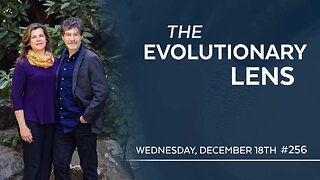Premium Only Content

Moksha and Liberation: Walking the Path of Spiritual Freedom
Read full article here:
https://spiritualseek.online/moksha-and-liberation-walking-the-path-of-spiritual-freedom/
------------------------
Excerpt from the original article
In the pursuit of spiritual freedom, the concept of Moksha stands as a beacon of liberation from the endless cycle of rebirth and death, known as samsara (or reincarnation). Rooted in the ancient traditions of Hinduism, Buddhism, Jainism, and Sikhism, Moksha embodies the quintessence of emancipation, where the soul transcends the illusions of duality, achieving a state of pure consciousness and awakening. This ultimate aim is not just the cessation of physical existence but an awakening to the profound reality beyond the Veil of Maya, realizing the unity of the universe and the self.
The journey towards Moksha is intertwined with the practices of self-realization, awareness, and the dissolution of attachment and ignorance that bind the soul to the material world. In this detailed exploration, we will compare Moksha with its counterpart in Buddhism, Nirvana, and unveil the various pathways that lead seekers to this pristine state of liberation. Through the lens of Dharma, Artha, and Kama, we shall decode how these life objectives complement the quest for spiritual freedom, navigating through modern interpretations and the unique challenges presented in the digital era.
The Historical Context of Moksha
Moksha, derived from the Sanskrit root ‘muc’, signifies the act of liberation, encompassing the notions of freeing, releasing, or letting go. This concept is pivotal in Hinduism, where it represents the ultimate goal of human existence—salvation or liberation from the cycle of birth and death (or reincarnation), known as samsara. The emergence of Moksha as a spiritual goal dates back to the 1st millennium BCE during a period of profound religious development along the Ganges River valley in India. This era witnessed the rise of new religious movements that advocated the idea of life as a state of bondage to a continuous cycle of rebirth, urging the pursuit of spiritual liberation.
In philosophical terms, Moksha is closely intertwined with the dualistic theories of the Samkhya school of Hinduism, which posits the existence of two eternal realities: prakriti (matter) and purusha (consciousness). Liberation, or kaivalya, is achieved when an individual’s consciousness recognizes its complete separateness from material existence. This realization frees the soul from the bindings of worldly existence and leads to celestial emancipation. The Vedantic school further elaborates on Moksha by dividing it into two stages: Jivanmukti, liberation achieved during one’s lifetime, and Videhamukti, liberation attained after death.
The broader implications of Moksha extend beyond mere freedom from physical rebirth. It encompasses an epistemological and psychological liberation from ignorance, culminating in self-realization, self-actualization, and self-knowledge. This state is not only about the absence of suffering but is characterized by a profound experience of oneness with Brahman, the supreme self, manifesting as knowledge, peace, and bliss. The concept transcends the boundaries of Hinduism, finding resonance in other spiritual traditions like Buddhism, Jainism, and Sikhism, where it is referred to by various names such as vimoksha, vimukti, and mukti, each emphasizing a nuanced understanding of spiritual release and enlightenment.
Moksha vs. Nirvana: Understanding the Differences
In exploring the spiritual concepts of Moksha and Nirvana, it is crucial to understand their unique characteristics and the philosophical foundations they rest upon. Moksha, primarily rooted in Hinduism, is the liberation of the soul from the cycle of birth and death, often visualized as the soul’s union with Brahman, the ultimate reality. This liberation is not merely an escape from physical existence but a deep realization of one’s true self, achieved through various paths like devotion (Bhakti), knowledge (Jnana), and righteous action (Karma).
Conversely, Nirvana is a central concept in Buddhism, representing the ultimate state of being free from all worldly suffering and the continuous cycle of rebirth. This state is achieved through enlightenment, which involves a profound understanding of the truths of existence, culminating in the cessation of desires and attachment. Unlike Moksha, where the soul merges with a universal consciousness, Nirvana is characterized by the realization of Anatta (non-self) and Sunyata (emptiness), highlighting a fundamental absence of a permanent soul or self.
-
 UPCOMING
UPCOMING
Sarah Westall
8 minutes agoDigital Slavery and Playing with Fire: Money, Banking, and the Federal Reserve w/ Tom DiLorenzo
-
 UPCOMING
UPCOMING
2 MIKES LIVE
4 hours ago2 MIKES LIVE #157 ILLEGALS, PROTESTORS AND DRONES!
81 -
 1:01:03
1:01:03
LFA TV
22 hours agoTHE LATEST SPENDING BILL IS AN ABOMINATION! | UNGOVERNED 12.18.24 5pm EST
7.51K7 -
 1:43:34
1:43:34
Redacted News
3 hours agoBREAKING! WARMONGERS PUSHING TRUMP TO LAUNCH PRE-EMPTIVE WAR WITH IRAN | Redacted News
82.8K150 -
 1:00:26
1:00:26
Candace Show Podcast
3 hours agoPiers Morgan x Candace Owens | Candace Ep 123
40.9K132 -
 2:06:51
2:06:51
Darkhorse Podcast
6 hours agoThe 256th Evolutionary Lens with Bret Weinstein and Heather Heying
41.2K24 -
 3:08:08
3:08:08
Scammer Payback
3 hours agoCalling Scammer Live
22K -
 1:21:25
1:21:25
Mally_Mouse
6 hours agoLet's Yap About It - LIVE!
69.2K9 -
 5:35
5:35
Cooking with Gruel
23 hours agoMaking Fresh Salted Caramel
56.3K7 -
 16:16
16:16
DeVory Darkins
20 hours ago $9.32 earnedMedia Panics after Trump Threatens to Sue Media for Defamation
56.5K106